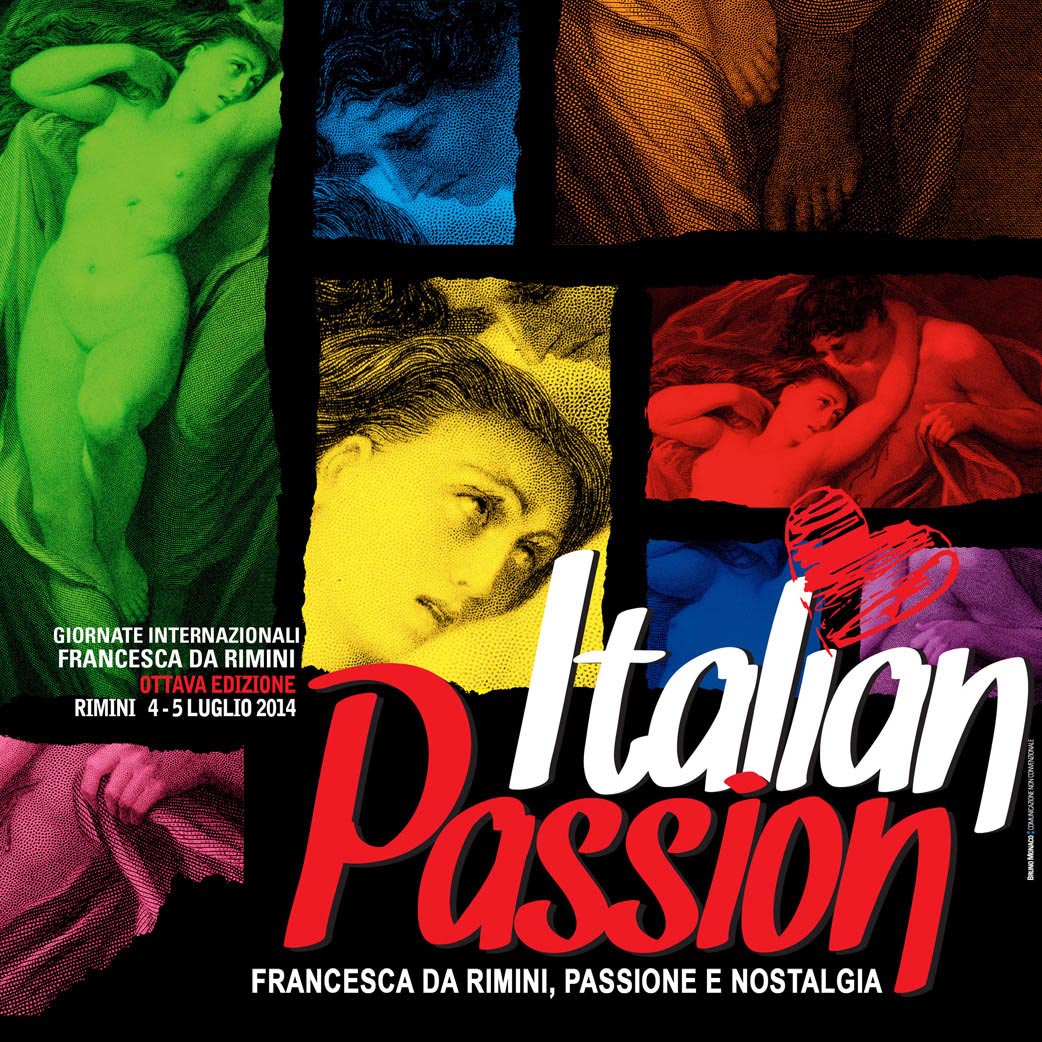
|
GIORNATE INTERNAZIONALI FRANCESCA DA RIMINI VIII Edizione, Rimini, 2014 Italian Passion |Francesca da Rimini, passione e nostalgia DIVINA PASSIONE Francesca da Rimini in the illustrated Comedies from the 15th to the 20th century, from Braccio Baldini to Renato Guttuso
July 4 to September 28 ,2014 | Rimini City Museum
DIVINA PASSIONE shows sixty Comedies, printed from the 15th century to the present, selected among more than one thousand editions, both old and modern, of Dante’s poem belonging to the Livio Ambrogio Collection, a collection unique in the world for its completeness and systemacity. Sixty precious pieces on display that allow several types of approach, different paths and narratives because of their documentary values. They document the history of typographic art from the beginning to our own time, from the first printed book in Italian--the editio princeps by Johann Numeister, a Mainz typographer at the workshop of the inventor of the movable type, Johann Gutenberg--ending with Alberto Tallone’s edition of the Lettera to Dante by Roberto Benigni in 2007. Moreover, they tell the engraving techniques and the illustration history: from the oldest chalcographic illustrations, like Baccio Baldini’s images in the Comedy of 1481, to the xilographies in Bonino de Bonini’s incunabula in 1487; from William Blake’s hetchings to the postmodern experimental techniques of Tom Phillips in 1983. There are also contemporary comic strips and manga.
Furthermore, the exhibition shows the styles and the expressive languages In addition to this, the Comedy’s success is traced in its important moments, from the rare Mantua edition of 1472 to the Nineteenth- and Twentieth- Century monumental editions. The rare Compendio of 1696, for example, recalls how Dante fell into oblivion in the 17th century: in the sixteenth century the editions were forty, while in the Seventeenth Century there were only three, one of which is on display. Among the Comedies there is also a piece, which is not a Comedy: the poem Francesca da Rimini by the Jacobin Francesco Gianni written in 1795. Here, the protagonist of the 5th Canto is given an independent life. It is the first work dedicated to her in the history of Italian Literature. Incipit of the immense literary and artistic production dedicated to Francesca who, between the Nineteenth and Twentieth Century, proposes a woman in love who talks about freedom, beauty, faithfulness, passion and kisses. A heroine in love who defeats injustice and violence by dying. Not a sinner, but the victim of treachery and, therefore, guiltless. She can exist outside Hell. Described with positive values, she will influence the modern Comedy illustrators, annotators and exegetes, beginning with Flaxman and Foscolo. Next to the rare incunabula, of which there are but a few copies in the world, we have “light” evidence of the great popularity that Dante and his Comedy, thanks to the myth of Francesca, received from the Nineteenth century till nowadays among the less acculturated people: objects of daily use, curiosities: from matchboxes to illustrated love cards and little barber calendars. The reason why these extraordinary documents have been brought to Rimini for this event is clear. It is for a joyful event, it is for the homage to The Divine Comedy’s most loved character who has been carrying the name of the town all around the world for seven hundred years: the town which saw her in love and, perhaps, dying for love. The Gradenigo codex, one of the Gambalunga Library jewel on display with the Comedies of the Ambrogio Collection, welcomes her. Francesca da Rimini returns to her town: it is indeed the return of Francesca da Rimini through the most beautiful and precious pages bearing the verses and the images that created a myth. A myth that can talk to the modern age and to future generations about love, passion, respect for feelings and life. Welcome back to Rimini, Francesca
Info: +39.0541.704421/704426 | +39.3318346391
L’immagine guida dell’edizione
2014 è una libera elaborazione da |
|
|
© immagini e testi sono riproducibili solo con la citazione dell'evento |